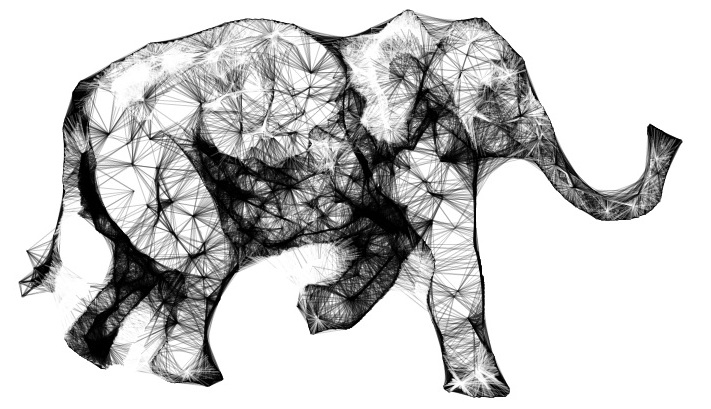 Let’s talk about de-extinction. Actually, let’s not. Let’s talk about what the as-yet-unrealized technology known as “de-extinction” really is, which is the creation of hybrid organisms using genetic material from both extinct and extant species. Last month, a team of scientists announced that a hybrid elephant-mammoth embryo—”more like an elephant with a number of mammoth traits,” said the team leader—could become a reality “in a couple of years.”
Let’s talk about de-extinction. Actually, let’s not. Let’s talk about what the as-yet-unrealized technology known as “de-extinction” really is, which is the creation of hybrid organisms using genetic material from both extinct and extant species. Last month, a team of scientists announced that a hybrid elephant-mammoth embryo—”more like an elephant with a number of mammoth traits,” said the team leader—could become a reality “in a couple of years.”
The notion of resurrecting extinct species is fascinating—it’s one of the ultimate what-ifs—so it’s understandable that even this somewhat vague statement made international headlines. But let’s say these scientists succeed. Let’s say that in 2019 or thereabouts, they’ll be able to produce, in the laboratory, a viable elephant embryo containing some mammoth DNA. To be clear, that’s not a mammoth. It’s not even a mammoth embryo. There are no guarantees that this theoretical embryo would survive to adulthood, or be fertile, even in captivity. It’s even less likely that an organism that developed from this embryo could survive in existing habitats, or alongside existing species.
I’m not fundamentally opposed to this line of research, or others like it. What does trouble me is that its potential is enormously oversold, most certainly in the media and often by its own practitioners, and the pitch begins with its catchy name. “De-extinction” is seductive, because it suggests a quick solution to a stubborn problem. Frosty things can be defrosted and humid things can be dehumidified, so maybe extinct things can simply be … de-extincted. If only.
Research on extinct-extant species hybrids is also frequently portrayed as a complement, or at the very least not a detriment, to the work of protecting living species. But a new paper in Nature Ecology & Evolution suggests otherwise: When a group of scientists from Canada, Australia, and New Zealand modeled the conservation costs and benefits of a theoretical “resurrected” species, they found that even if the required research and development were privately funded, the public cost of managing free-ranging hybrids would mean less money for the conservation of other species—and a net loss for biodiversity. In other words, de-extinction has an opportunity cost, and it would be paid by living species.
There’s an opportunity cost in the coverage of de-extinction, too. As a story, it’s an easy sell: a wacky idea, a novel, unproven technology, a small group of dedicated believers. Plus potential mammoths! Who can resist? But the coverage of de-extinction is way, way out of proportion to its relevance to conservation. A theoretical mammoth-elephant hybrid embryo is not a mammoth, and neither is it a vaquita, or a northern white rhino, or a Karner blue butterfly, or any one of the millions of other species, both rare and common, that still live on earth today. For every de-extinction story, I’d like to see at least a million stories about species that don’t need to be de-extincted—yet.
Conservation is difficult, and writing about it can be, too. Protecting habitable pieces of land and water from our own impulse to increase is slow, frustrating, sometimes boring work. But difficult work is still worth doing, and difficult narratives are still worth finding. For despite all the noise about what we’ve come to call de-extinction, nobody’s found a technological shortcut for conservation—or a solution to its failure.
Top illustration by Sandra Strait. Creative Commons.
OK, but a question, maybe two: First, is everybody satisfied that existing conservation measures, in the face of climate change and poaching (to name just two threats), can guarantee the survival of elephants on Earth for the next couple of centuries at least? Only for those who regard the answer is “no,” would you rather there were no elephants left on Earth or, say, a North American herd–constituted from former zoo captives and spiffed up for cold-hardiness with some mammoth genes?